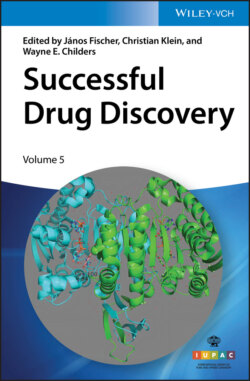Читать книгу Successful Drug Discovery, Volume 5 - Группа авторов - Страница 22
1.4.2.3 Epothilones
ОглавлениеA related example is the work on epothilones (Figure 1.9). Initially isolated from the myxobacterium Sorangium cellulosum by Hofle et al. [56] in the German Federal Research Center Gesellschaft für Biotechnologische Forschung (GBF) in Braunschweig, the macrolides raised attention due to their structural and biological properties.
Figure 1.9 Epothilone derivatives.
The formation of the 16‐membered, highly functionalized ring system stimulated the creativity of many academic groups and spurred the development of new and effective synthetic methods, e.g. ring closing metathesis for creation of the epothilone ring system. Among many others, the total syntheses reported by renowned academic experts such as Samuel Danishefsky [57], K.C. Nicolaou [58], Alois Fürstner [59], Dieter Schinzer [60], Eric Carreira [61], and Johann Mulzer [62] are particularly noteworthy, displaying a wide range of different approaches. Several companies, encouraged by synthetic accessibility of the core structures, got engaged in lead optimization programs. To date one derivative, ixabepilone (Figure 1.9), is used as a medication to treat advanced or metastatic breast cancer. It was developed by BMS [63] and received FDA approval in 2007.
